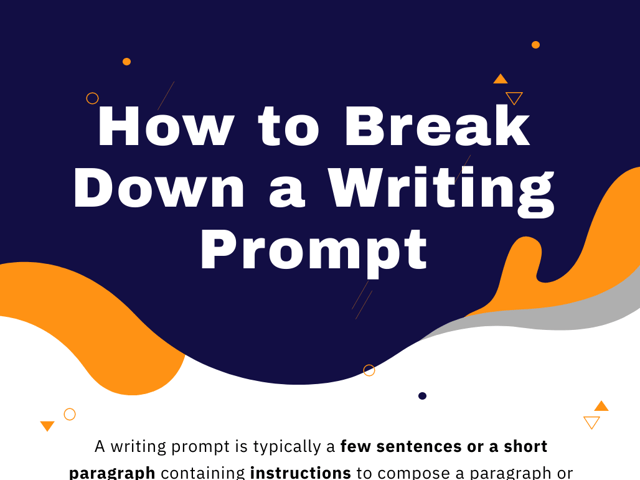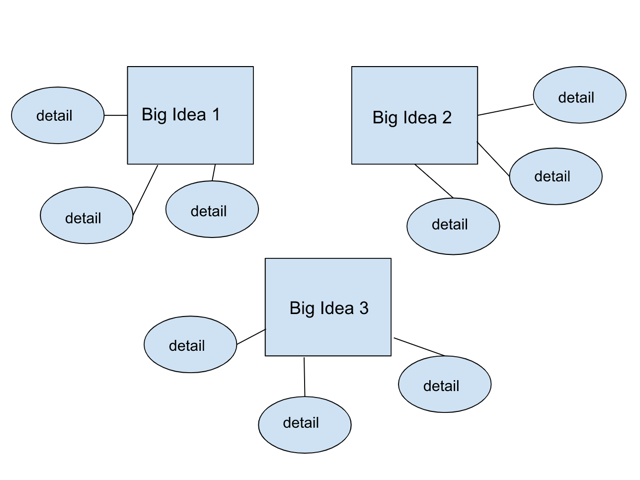
How to Break Down a Writing Prompt
Writing prompts and essay questions often have a reputation for being difficult to discern or complete, but this need not be the case.
A writing prompt is typically a few sentences or a short paragraph containing instructions to compose a paragraph or essay using your reasoning and writing skills. Although responding to a writing prompt can be intimidating, prompts will have all of the information you need to know within them, removing the guesswork.
How to Proceed
Getting to the root of the prompt is often the most difficult part of the task, so developing a few strategies to break down a writing prompt is a worthwhile investment of your time. The most effective strategies are closely reading, writing down all of the components, and systematically responding to each one.
Step 1: Read Closely
To closely read a prompt, read through the prompt once, just to get a feel for what is being requested. Then, read through it again, and pick out any specific questions being asked or details being requested. Notice the language used: Are you being asked to compare and contrast? Are you being asked to persuade someone to a certain line of thinking? Are you being asked to compile information, or disprove an argument?
Questions will not always be forthright.
-
If you are being asked to compare and contrast, for instance, the prompt is unlikely to read, “Compare and contrast XYZ.” Instead, the prompt will likely say something along the lines of, “Explain the differences between X and Y. Are there any similarities?”
-
If you are being asked to disprove an argument, the prompt will not likely say, “Disprove the argument,” but might instead ask, “Are there any logical fallacies present in the passage?”
To keep this straight, write down all of the questions you find.
Step 2: Write Down All the Parts of the Prompt
Writing down the questions or prompts in your own words, if possible, is an important strategy. It allows you to reframe the prompt in your own words and gain a clearer picture of what it is you are being asked to do.
-
If, for instance, a prompt reads, “Read the passage above, taken from Jane Austen’s ‘Pride and Prejudice,’ and note the author’s use of language. What does this indicate?” You can break down the prompt further, by noting what the passage wants you to do: read, pay close attention to the language you are reading, and evaluate why the language use is significant.
-
A prompt might say, “Nutritional health seems to be on a sharp downward curve in the United States. Education, economic status, family status, and ethnicity may all be a factor in determining nutritional health. Why do you think this is?” This prompt seems simple enough, but note that the question touches on four components (education, economic status, family status, and ethnicity). The prompt may be reframed as, “Why do you think education impacts nutrition? Why does economic status impact nutrition?”, etc., until all of the questions have been answered.
Step 3: Respond to Each Part Thoroughly
Once you have all of your questions written down, take the time to systematically respond to each one. Responses for writing prompts are often marked down because not all of the questions are answered, or the prompt is not answered in a robust, thorough manner. Avoid this pitfall by going through each of the questions you’ve identified through a close reading, and make sure that you answer each and every one in a thoughtful, careful, and thorough way.
With these three skills mastered, tackling a writing prompt becomes a simple, straightforward process.

Keep Reading

STAAR test Blog
What Is Covered on the STAAR® Algebra I Test?
The State of Texas Assessment of Academic Readiness® (STAAR) program co…

STAAR test Blog
Tone and Key Words for Persuasive and Expository Writing
The STAAR® test, like many assessments, includes a writing component. W…

STAAR test Blog
How to Outline Quickly before Writing
The following strategies can be used in regular classroom writing assig…